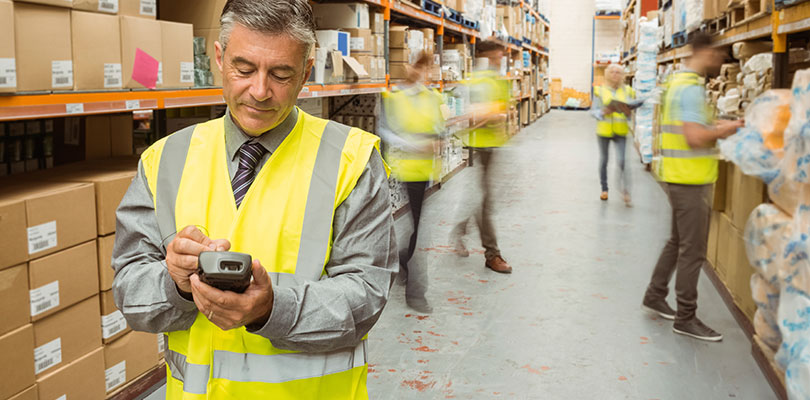What Causes Gout?
Wouldn’t it be great to have lobster or steak prepared for you every day for dinner?
Picture the table: a feast of rich foods and a collection of alcohol bottles nearing completion after rounds of toasting the chef for another impressive meal. Everything prepared to perfection with your favorite seafood appetizers and buttery sides with the main course. It sounds heavenly.
However, too many meals like this and you may find yourself staring questionably back at your doctor after being diagnosed with gout.
What Is Gout?
Gout is a common type of inflammatory arthritis that seems to hit you without warning. By the time you notice your painfully swollen big toe (or another lower body joint), gout has been manifesting inside you for a while. Gout doesn’t target you because of age, gender, prior ailments, or geographic location. Given the right circumstance, gout can affect anyone.
Usually, gout forms when the body breaks down purines – which are found naturally in human cells and many foods. During digestion, purines break down into uric acid. Uric acid is transported by the blood to the kidneys, filtered, and eliminated in urine.
Foods that are high in purines include:
- Red meat
- Mushrooms
- Asparagus
- Cauliflower
- Caviar
- Duck
- Chicken
- Mussels
- Scallops
- Lamb
- Lobster
- Organ meats
- Alcohol
- Seafood
In short, if it’s rich and delicious – better to err on the side of caution and practice moderation when consuming.
High levels of uric acid in the blood is a condition called hyperuricemia, and this is where gout develops. Asymptomatic hyperuricemia is the time frame before the initial gout attack.
There aren’t any symptoms to speak of during this phase, but under the surface, blood uric levels are high and start to form needle-like crystals which later cause unexpected moments of pain. This can even occur if you produce a normal amount of uric acid, but your kidneys can’t process it efficiently – leaving you with a banked supply of uric acid.
The Stages of Gout
There are a few stages of gout which include acute gout, interval gout, and chronic gout.
Acute Gout
This is also known as gout attack and happens when something causes uric levels to spike or jostles the forming crystals which bring on the attack. Inflammation and pain typically occur at night and last for several hours (in the neighborhood of 8-12 hours). Symptoms ease after a few days and go away in approximately one week.
Ankylosing spondylitis is a chronic, progressive and delibating type of arthritis that affects the spine. Read on to learn more about it here.
Interval Gout
These are the periods of time between gout attacks. There isn’t any pain to speak of, but just because you don’t see it, doesn’t mean the gout has disappeared. Low-level inflammation may still cause damage to your joints without awareness.
Chronic Gout
Chronic gout occurs in people whose uric acid levels remain high over the course of a few years. Attacks become frequent and the pain may not disappear as it once did. By following instructions from your physician and living a healthier lifestyle, this stage is preventable.
What Are the Symptoms of Gout?
Joint pain in the big toe is a typical first symptom of gout – generally following trauma such as illness or injury. Gout may also appear in other lower-body joints such as the ankle or knee and affects range of motion and comfortable movement.
Typically, only one joint at a time will be affected, but if left untreated it will play with several joints at once like a one-man band. If you are living with gout, you’re likely to experience warmth, swelling, redness, or tenderness of the affected joint.
Symptoms of gout seem to appear suddenly and often at night. Early studies speculate the nighttime attacks are due to overnight dehydration or falling levels of cortisol (which regulates a spectrum of processes throughout the body including metabolism and immune response).
The crystals from uric acid may cause painless lumps under the skin around joints; they can also form kidney stones if they collect in the urinary tract. Even after your gout is treated, there can be lingering discomfort after the severe pain subsides.
Don’t try to manage your symptoms on your own; see your doctor as untreated gout can lead to worsening pain and joint damage.
Who Is at Risk of Developing Gout?
There are many contributing factors of gout, and several that you can avoid with a few simple lifestyle changes. Gout is a more significant risk for those with high cholesterol, high blood pressure, diabetes, or heart disease.
Genetic/hereditary causes can contribute to gout, and you’re more likely to get it if other members of your family have had it. Gout is more common in men than women until around age sixty (post-menopause) – possibly due to natural estrogen protecting women up to that point.
Other risk factors to take into consideration include diuretic medications can raise uric acid levels, obesity, infection, crash diets/fasting, joint injury, surgery, or sudden, severe illness.
How to Prevent Gout
To combat gout, create a healthy lifestyle for yourself.
Drinking lots of water is one of the best things you can do as it will help dilute uric acid.
Eating clean, partaking in regular exercise and losing weight (if needed) can reduce your risk of gout attacks. Triggers such as alcohol (especially beer), pop, large portions of high-purine foods (such as red meat and shellfish as noted above), can be controlled with some willpower and better decision-making when you fill your plate.
Take care of your heart, especially since heart disease is common for people with gout. Eat lots of vegetables, whole grains, and plant proteins and steer yourself toward low-fat dairy options.
As with most things in life, practicing moderation does wonders. We all love a great meal filled with decadent flavor, but we don’t need to eat this way every night. Perhaps instead of toasting the chef with a frothy mug of cold beer, you fill a couple of water bottles and take them out for a long walk instead.







